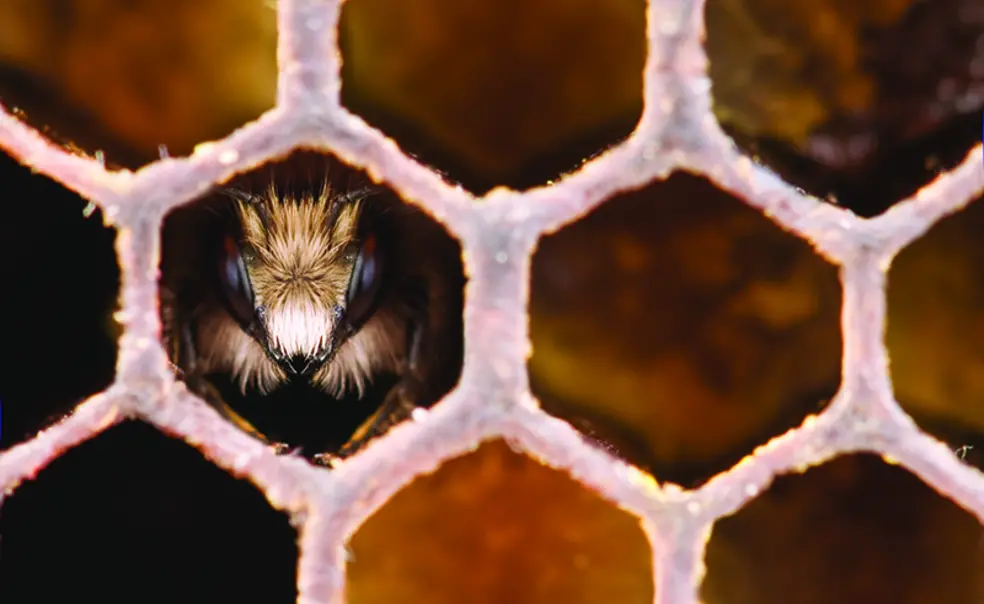Princeton Biologists Watch How Bees React to Isolation
Sarah Kocher’s lab set out to better understand social development
Social isolation has a cascade of behavioral and health effects on animals who are kept alone during their development — higher stress and even more mood disorders. But little was known about how social insects such as bees or ants — whose entire lives depend on their relationship to the colony — react to being raised solo.
“In social insect species, their whole life is centered around this need to be together,” says Sarah Kocher, assistant professor of ecology and evolutionary biology at Princeton’s Lewis-Sigler Institute for Integrative Genomics. “We wondered: What would social isolation look like in a species like that?”

That’s what led Kocher’s lab to study the brains, genes, and behaviors of bumblebees when isolated. Kocher and two lab members — postdoc Yan Wang and Grace McKenzie-Smith *22 — divided newly adult bees into three groups. One group was completely isolated for 10 days in small boxes, another group had access to just a small cohort of their sisters, and the third remained in the colony to grow up in the typical way, surrounded by hundreds of peers.
After their short period apart from the colony, all of the bees were returned to the group — and the researchers used sophisticated computer vision software, developed at Princeton, to analyze the bees’ body poses toward each other while they socialized with unknown bees in petri dishes. They also studied the gene expression and physical sizes of the bees’ brains.
What they found surprised them. The bees that were raised in isolation actually interacted more with partner bees, but they did so in unusual ways. Instead of standing head to head and rubbing antennae — passing chemical information back and forth to exchange messages — they were more likely to touch the other bee’s body in random ways, akin to a socially-awkward meeting.
In the bee brains, the researchers found a subset of genes that showed consistent differences in social isolation. When they took images of the deep brain of the different bees, they found the average brain volume between bumblebees from all three conditions were similar — but isolated bees showed the greatest variation in brain volumes. “Bees reared in isolation had wildly variable brain development,” Kocher says.
This work bucks the common finding among mammals such as mice and primates that isolation often leads to a higher level of aggression, Kocher says. That might be because the bees never learned how to be aggressive with partners. “In insects, it’s the opposite: Isolation increases the amount of time they spend with social partners later in life.” And in the brain, social interaction may provide a buffer for brain development to proceed normally. Their study was published in the journal Current Biology in May 2022.
What they found surprised them. The bees that were raised in isolation actually interacted more with partner bees, but they did so in unusual ways.
Kocher would like to continue this work to pinpoint exactly when in life — and for how long — these social experiences occur and how they affect physiology and behavior later. Additionally, the group that was raised with just a handful of peers had outcomes similar to those in a colony. Only a little social lubrication seemed to serve the bees well, she says — raising questions about the lowest limit of social contact. “Are two bees or three bees sufficient for normal development? Do you have to see or touch the other bee?”
In humans, social isolation is directly associated with dementia later in life, as well as changes in health, immune system, and lifespan. All of that is unknown in bees, but could raise potential questions to ask in future research, says Kocher. The lab is also planning on collecting bees from around the world to carry out similar tests on different types of bees, probing at the evolutionary underpinnings of social behavior.












No responses yet